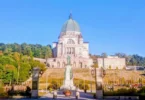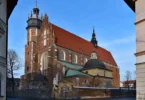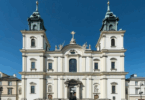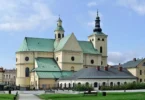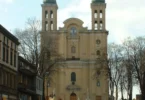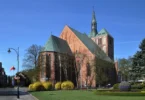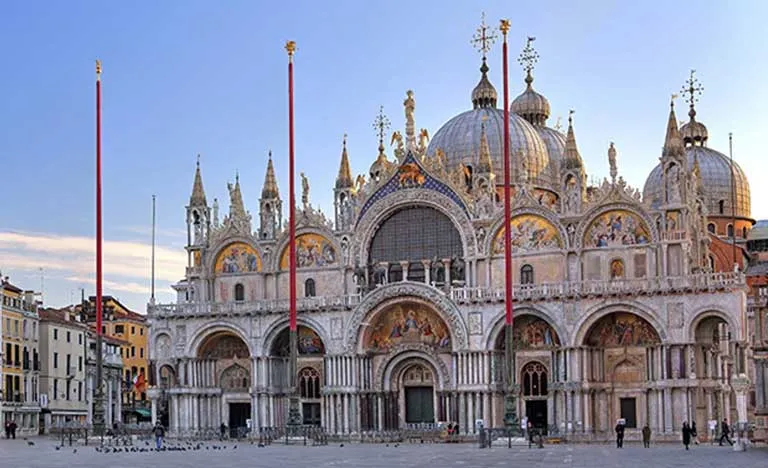
Introduction
Saint Mark’s Basilica (Basilica di San Marco a Venezia) is a world famous Byzantine cathedral in Venice’s St. Mark’s Square, sometimes known as Chiesa d’Oro or “Church of gold”.
San Marco Basilica, Italian Basilica di San Marco, English Saint Mark’s Basilica, church in Venice that was begun in its original form in 829 (consecrated in 832) as an ecclesiastical structure to house and honour the remains of St. Mark that had been brought from Alexandria. St. Mark thereupon replaced St. Theodore as the patron saint of Venice, and his attribute of a winged lion later became the official symbol of the Venetian Republic. San Marco Basilica, built beside the Palazzo Ducale, or Doges’ Palace, also served as the doge’s chapel. It did not become the cathedral church of Venice until 1807.
The first basilica was burned in 976 during a popular revolt against the doge Pietro Candiano IV but was restored under his successor, Doge Domenico Contarini (died about 1070); the present basilica was completed in 1071. The plan is a Greek cross, and the building is surmounted by five domes. The design is distinctly Byzantine, and it is likely that both Byzantine and Italian architects and craftsmen were employed in the construction and decoration. Over the centuries, additions of sculpture, mosaics, and ceremonial objects have increased the church’s richness.
The famed four bronze horses on the west facade gallery, for example, were brought to Venice at the time of the Fourth Crusade (1204) from Constantinople, where they had been part of a Greco-Roman triumphal quadriga (a sculpture of a chariot drawn by four horses abreast). Though originally placed in the Arsenal, they were set up in the mid-13th century on the exterior of San Marco. They were removed to Paris by Napoleon but were returned in 1815. Later, to protect them from damage, the originals were brought inside and replicas were put in their place.
History of Saint Mark’s Basilica, Venice
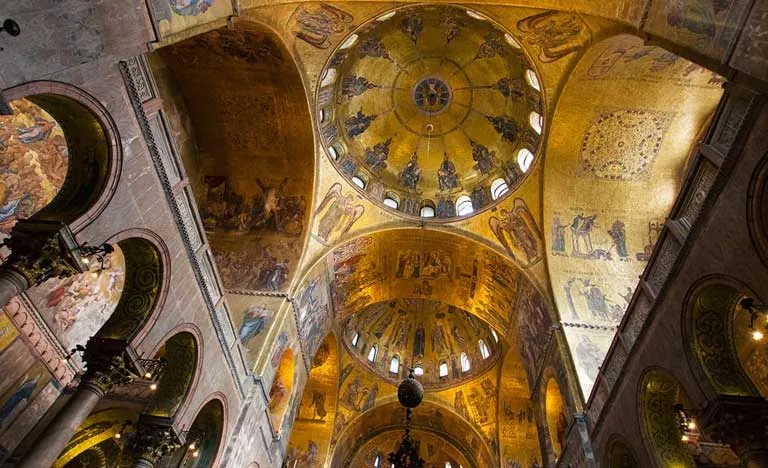
San Marco is the greatest monument of the city, a temple of civil life, as well as of religious faith, testimony of the greatness of Venice. For about a thousand years it carried out the functions of the Ducal Chapel directly dependent on the Doge who appointed the Primicerio to which episcopal authority was conferred and the State Church entrusted to the protection of the Procurators of San Marco.
It has always been the temple where the events of the people and the Venetian government have had the highest celebration. In 1807 San Marco became the seat of the Patriarch of Venice and the city cathedral, thus closing its millennium of ducal history. The basilica of San Marco has lived two very important roles throughout its history that of the palatine church, the chapel of the Doge’s Palace and, since 1807, that of the city’s cathedral.
In the first phase, the doge is elected in the Doge’s Palace and is then presented to the citizens and publicly proclaimed from the right pulpit, reserved for him, in San Marco, then goes out into the square and meets the people according to particular rites and ceremonials.
The doge himself is the first celebrant of the church of San Marco, even if in the liturgies this role is covered by the “primicerio”, the first of the canons of the basilica, an ecclesiastical appointed by the dog, with episcopal prerogatives, who represents him.
As a state church, other official ceremonies take place in San Marco, such as the blessing of soldiers leaving for the war or the presentation of the flags torn from the enemy.
In memory of the “Peace of Venice”, the historic event experienced in the church of San Marco in 1177, the names of the protagonists, the highest authorities of Europe, are engraved on the marble floor of the atrium: Pope Alexander III and the emperor Frederick Barbarossa, promoter of the Doge of Venice Sebastiano Ziani.
The old doge Enrico Dandolo reunited in 1201 in San Marco the Crusaders gathered from all over Europe about to leave for the Holy Land, to have divine protection and help. In 1377, in a moment of very serious danger, when the Genoese allies of Chioggia pressed the Republic closely, the people imposed Vettor Pisani as head of the army and led him to San Marco so that the doge would grant him command of the defense of the city.
San Marco is a place of meeting and prayer for Venetians even in very painful moments, as in 1576 when the vow is taken to erect the temple to Christ the Redeemer in 1630 that to the Virgin to be freed from the terrible plagues, and finally in 1797 when Venice sees the end of its independence.
San Marco is also a reference for merchants and sailors, who traveling by land and sea enrich it with precious gifts, with marbles and with various art treasures, all with the desire to help keep this monument large and rich as a testimony of the grandeur of Venice.
On 12 May 1797 the Serenissima fell under the blows of the Napoleonic troops. A new phase opens up for the basilica of San Marco. In 1807 San Marco became the seat of the Patriarch of Venice. At the behest of Napoleon himself, the cathedral was transferred from the ancient seat of San Pietro di Castello to San Marco, which lost its original function as the doge’s chapel and thus became the city’s cathedral.
Architecture of Saint Mark’s Basilica, Venice
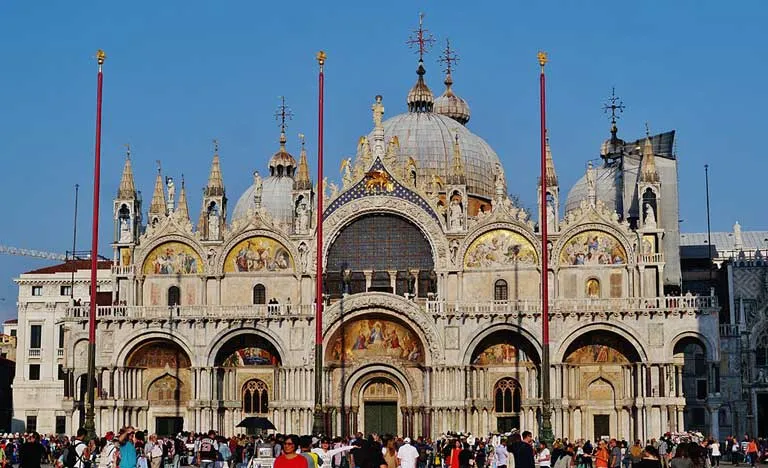
The basilica’s interior is decorated throughout with mosaics on gold ground and with many varieties of marble; the floor is of inlaid marble and glass. In the restricted light their colours glow. The screen separating the choir from the nave has marble statues, masterpieces of Venetian Gothic sculpture by Jacobello and Pier Paolo dalle Masegne.
To build the Saint Mark’s Basilica, Venice transfers the spiritual and material heritage of Byzantium to the West.
The Greek cross plan rests on a structure which in the central longitudinal nave shows basilical architectural motifs: the vertical arm of the cross is larger than those of the transepts, the altar is located in the apse area. Above the cross rest the five domes, symbol of the presence of God.
The articulation of the space is full of suggestions not found in other Byzantine churches. Inside, a unitary sequence is proposed divided into individual spatial scores, to which the mosaic with a gold background guarantees continuity and the particular way of being of the church.
Mosaics
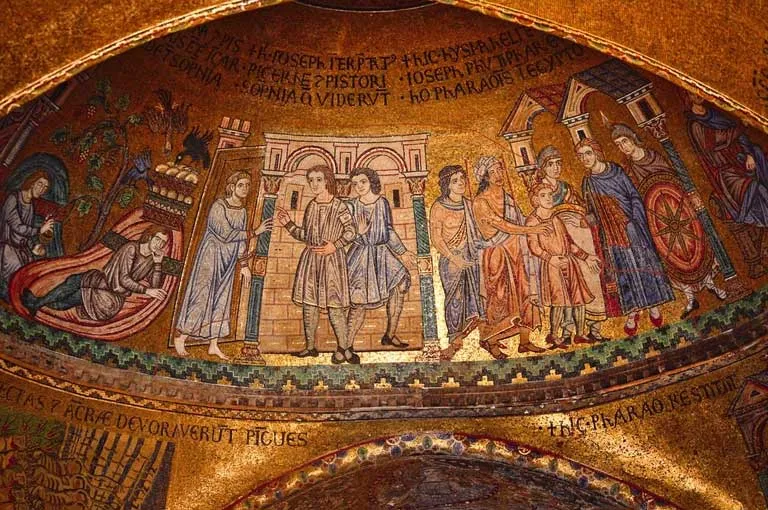
When one thinks of the basilica of San Marco, the first images that come to mind are those of the mosaics and their golden backgrounds.
The mosaics cover the walls, vaults and domes of the Marcian basilica for over 8000 square meters.
Essentially Byzantine in its architectural conception, the basilica finds its natural integrating element in the mosaic. The mosaic decoration develops over about 8 centuries of the basilica’s history.
The mosaics of the basilica of San Marco depict stories taken from the Bible (Old and New Testament), allegorical figures, events from the life of Christ, the Virgin, San Marco and other saints.
The mosaics, in which warm colors dominate, in particular gold, adorn the large space of the basilica, which measures 28 meters in width and reaches 21 in height in the arches. The space is enveloped in veiled light, as in Middle Eastern churches, which varies continuously at different times of the day, with suggestive and very intense effects.
In the mosaics of San Marco we find the most significant testimony of the history, aspirations, faith of Venice and the evolution of the languages and trends that have characterized its art: from the Greek-Byzantine origins, to the native artistic expressions and skill to interpret and personalize messages imported from the outside up to today’s, very difficult art of preserving and restoring this precious and complex artefact.
Sculpture
There is perhaps no building as rich as San Marco in sculptures of such different nature, age and origin. The figurative plastic of the French cathedrals of the twelfth and thirteenth centuries is certainly even richer, but for the most part they are works created in the place for which they were conceived and to which they are intended or survived a pre-existing building.
In San Marco this case occurs only for a part, albeit significant, of the sculptures. The rest was collected elsewhere, and then placed inside or outside the church and forced to merge into a whole that constitutes a curious mixture of trophies, ornamental elements already endowed with meaning, subsequently integrated into new mosaics and sculptures in a very fascinating decorative symbiosis from a programmatic point of view.
The result is a picturesque unitary complex, although naturally more than a logical and structural unit it is a unit that is perceptible with the senses and with the imagination.
St. Mark The Evangelist

On January 31 of the year 828 the relics of the patron saint Mark, which were in Alexandria in Egypt, are adventurously moved to Venice and welcomed by the Doge Giustiniano Particiaco.
In those times the relics represented a powerful social and economic aggregator, attracting pilgrims and merchants.
Every relic is therefore welcome and that of St. Mark is particularly welcome in Venice, as that Saint would have evangelized the Venetian people, becoming their patron and emblem in the form of a winged lion, armed with a sword and equipped with a book on which, in time of peace, you can read the phrase Pax Tibi Marce Evangelista Meus (Peace to You or Marco Mio Evangelista); a book that is threateningly closed when the sword, instead of discriminating between good and evil, is stained with warrior blood.
Bell Tower
The bell tower of San Marco is a mighty tower with a square plan, about 99 meters high including the crowning cusp, formerly a light house for sailors, prototype of all the bell towers in the lagoon. It was built for the first time in the 12th century on the site of a probable watch tower and rebuilt in its present form at the beginning of the 16th century with the addition of a belfry with a copper-clad spire and surmounted by a kind of revolving platform on where the statue of the Archangel Gabriel is placed, with the function of indicating the direction of the winds.
Of the five original bells, only the largest remains. The others, now replaced, were destroyed in the collapse of the bell tower in 1902. From the bell loggia you can observe the wonderful panorama of the city and the lagoon from above.
Leaning against the base of the bell tower is the loggia that Jacopo Sansovino built between 1537 and 1549, adorning it with marble and bronze.
Begun on pre-existing Roman foundations in the nineth century, built several times from the twelfth to the fourteenth century, the bell tower assumes, after many restorations and renovations, its final appearance between 1511 and 1514.
It is made up of a solid square barrel, in terracotta, pilastered, 12 meters wide, 49.5 meters high (half of the entire height, 98.6 meters), and an arched belfry, on which a large nut that serves as the base of the pyramidal spire on which the golden angel rests.
Simple, with a Roman concept in its severe harmony of lines and proportions, the tower has always been the first to appear to those arriving from the sea, with the glow of the golden angel placed on top, on a rotating platform. Struck several times by lightening and earthquakes, it continued its centuries-old life until the early 1900s.
On July 14, 1902, the bell tower suddenly collapsed due to imprudent building work. The damage caused is not irreparable: the “stone of the ban” at the corner of the Basilica prevents the collapse of the corner column and saves the basilica. The Loggetta, on the other hand, remains buried under the boulders.
The news of the collapse spread all over the world: the City Council decides that the bell tower should be resurrected identical to the collapsed one.
The first stone was placed on April 25, 1903, nine years later, in 1912, on the same day as San Marco, the new bell tower was inaugurated. The construction, faithfully copied in its external appearance, carried out for greater solidity and static safety according to the most rigorous laws of construction technique, is reintegrated with some destroyed parts: that is, they are placed on two sides of the nut above the cell, alternating with the Justices, the two going lions in Istrian stone to replace those chiseled at the fall of the Republic, and, on the top, the embossed copper statue of the Archangel Gabriel is reassembled with the original fragments, almost entirely redone, copying the ancient model of the 1822.
The history of the bell tower is linked to the memory of the traditional feast of the flight of the Angel, an exercise in balance, which consists in the descent of an acrobat, along a tight rope, from the height of the cell, to a boat on the Basin or to the loggia. of Palazzo Ducale from where, Doge and Signoria, attend the show that takes place on Shrove Thursday.
The visit to the bell tower is one of the attractions that we do not fail to offer, even in the past, to illustrious guests, although the Signoria is cautious in granting permits to foreigners, fearing that they may take over the position of the city and its people for military purposes, ports. For Galileo Galilei, the bell tower was used as a viewing window for the study of the ways of the sky and on the bell tower the eminent scientist presented his telescope to the Signoria in 1609.
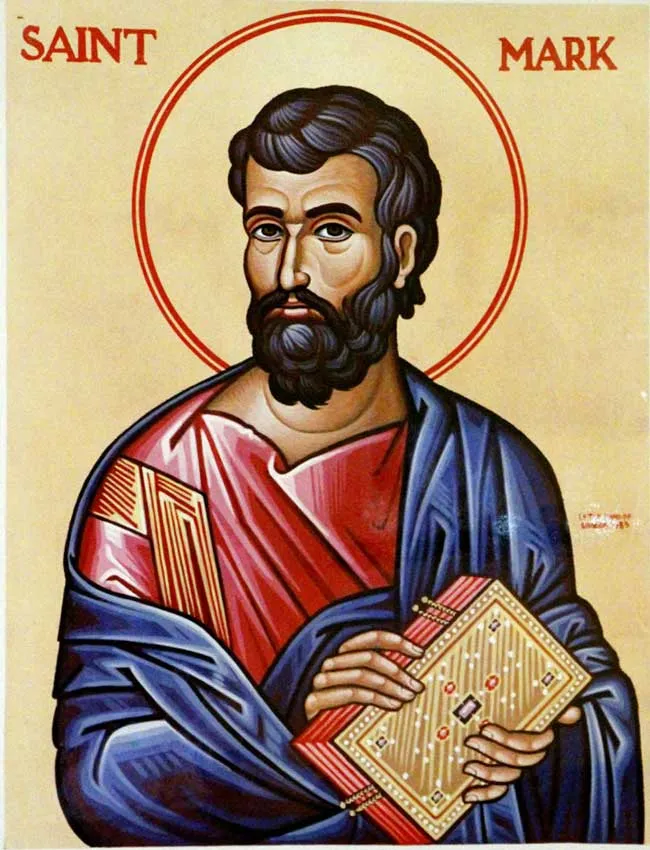
Feast Day – 25th April
The Feast of St Mark (La Festa di San Marco) is an annual local public holiday in Venice, Italy, on April 25 each year. It honors St. Mark, the city’s patron saint, and coincides with Liberation Day.
St. Mark’s feast day is observed by the Catholic and Eastern Orthodox Churches on the anniversary of his death on this day in 68 AD.
Mass Time
Weekdays
Sundays
Church Visiting Time
Every days : 8:00 am to 7:30 pm
Other Facilities
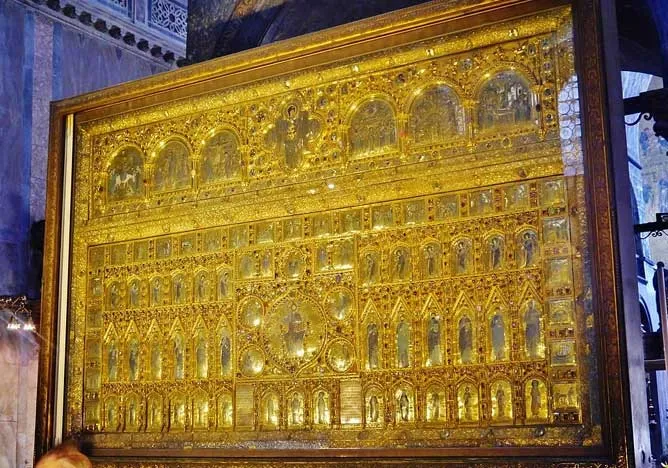
Treasury And Pala D’oro
The Treasure of San Marco represents the richest documentation of goldsmith’s products, silverware, precious stones, worked glass and paintings; how much more refined has been produced for the churches and palaces of Constantinople and how much more precious the Venetian craftsmen have been able to create for the glory of San Marco.
Adjacent to the main altar, where the relics of the Evangelist are kept, stands the Pala d’Oro, commonly considered the most refined and precious jewel of the Basilica.
San Marco Museum
The San Marco Museum was established at the end of the 19th century. A new layout has recently been created thanks to the expansion of the museum spaces between the historic area above the atrium-narthex of the Basilica of San Marco and the former banquet hall of the doge.
Inside there are objects of various kinds and origins belonging to the basilica.
Among the most prestigious works we find the Marcian quadriga, moved from its original position to the center of the main facade after the last restoration.
In the Banqueting Room there is the weekday altarpiece by Paolo Veneziano, a wooden table from the mid-fourteenth century painted with the stories of San Marco, used in ancient times to cover the golden altarpiece.
In the Museum there are Persian carpets, liturgical vestments, illuminated manuscripts with the texts of the Marcian liturgies and fragments of ancient mosaics, detached during the nineteenth-century restorations. Again we find wool tapestries with the stories of the Passion of Jesus and others in silk and silver with the stories of San Marco.
On the occasion of the renewed exhibition, the official site of the San Marco Museum was created to illustrate its history, works and new spaces: official site of the San Marco Museum.
Musical Chapel
The Musical Chapel of San Marco was born at the beginning of the 14th century and immediately became the centre of Venetian musical life in which styles and ways of thinking about music developed, suited to the magnificence of the Basilica.
In the second half of the 16th century, a new musical thought develops inside the chapel which suddenly places it at the center of European attention and which leads to a general and radical change in musical thought.
In the period in which the greatest composers of the moment (Adrian Willaert, Claudio Merulo, Andrea and Giovanni Gabrieli, Claudio Monteverdi) actively participate in the life of the Chapel, the “broken choirs”, the echo sonatas and, above all, a new way of relating music and words and, with the help of new instrumental techniques, a new conception of sound evolves.
Contact Info
San Marco, 328,
30124 Venice, Italy.
Phone No.
Tel : +39 041 2708311
Accommodations
How to reach the Basilica
Venice Marco Polo International Airport at Venice, Italy is the nearby Airport to the Basilica.
Stazione di Venezia Santa Lucia Train station in Venice, Italy is the nearby Train Station to the Basilica.

